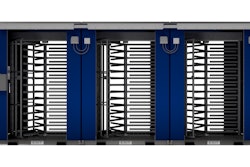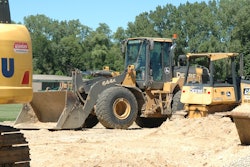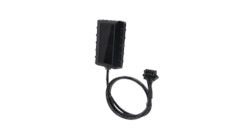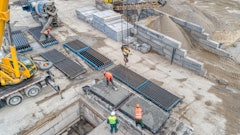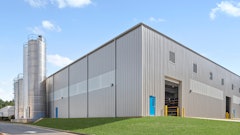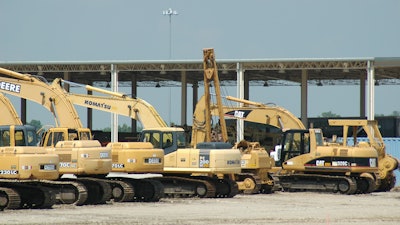
For construction firms with significant vehicle and equipment assets, fully integrating the latest capabilities of physical security and access control systems can substantially drive down the costs of protecting these assets from theft or vandalism.
This “virtual” approach combines video surveillance, access control and information technology (IT) integration to replace many of the functions of in-person security personnel. Virtual systems can be customized to a variety of loss prevention situations, no matter the size of the operation or type of assets that need to be protected. Examples include preventing the theft of trucks, batteries, catalytic converters, copper wire, scissor lifts and other valuable items.
The strategy takes full advantage of the interconnectivity of information across a broad range of systems and devices. Based on the construction firm’s priorities, integrated systems can intelligently sift through millions of points of information and prioritize only the most relevant events to deter and prevent theft in ways that were previously not possible.
While such data has existed before today, many construction company owners are unaware of another critical factor – that the costs for managed IT services and integration continue to drop while the capabilities of the various systems have increased.
“Using off-the-shelf tools to create super secure environments would have cost hundreds of thousands of dollars a year for larger organizations to staff, monitor and support. We are routinely implementing these solutions with better, faster response at a fraction of the client’s current cost,” says Eric Brackett, president of BTI Communications Group, a technology convergence provider.
“However, I find that most construction professionals are too busy with their existing responsibilities to realize how much has changed and how valuable it could be to them,” adds Brackett.
Zeroing In On Real Threats
While the status quo for physical security is familiar, the rapidly growing volume of data in the form of video, alerts, reports, etc., is threatening to hide the most important threats in the sheer volume of less important data. Such information is continually reported and logged on sensors, cameras, servers, PCs, smartphones, two-way radios and thermostats.
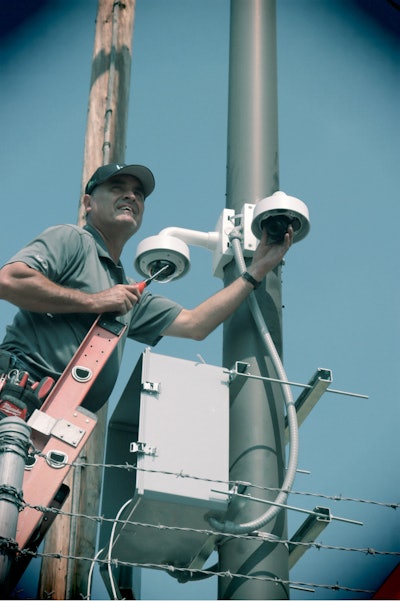 Partnering with an experienced integrator enables the combination of video surveillance, access control and IT tailored to specific needs, which drives down costs while flagging and escalating only true risks.BTI Communications Group
Partnering with an experienced integrator enables the combination of video surveillance, access control and IT tailored to specific needs, which drives down costs while flagging and escalating only true risks.BTI Communications Group
“Now, expert integrators have perfected the use of tools that bring all that information together into dashboards that convey needed information at a glance. This is combined with technical and operational procedures to analyze, parse and present it. So, actual threats can be responded to and thefts deterred in real-time,” says Brackett.
Where traditional systems can inundate security staff with mind-numbing nuisance alerts, many of which go ignored, the goal of the fully integrated virtual approach is to vigorously and promptly protect valuable construction assets from theft without unnecessary staffing, excess equipment or complexity.
In terms of video surveillance, that means instantly spotting any anomalies and escalating only those that need attention. It means preventively spotting any discrepancies in door or gate access control based on time of day, location, personnel involved and other factors. It means “slicing and dicing” a host of variables specific to the business that must be considered, and drawing the attention of security personnel or managers when it is time to act, and not when it is too late.
Looking Beyond the Status Quo
For many construction firms that have security cameras and access systems already installed, there may be some level of integration, but most are not able to unlock the full potential.
“Construction firm owners and managers are disappointed when they hit the limits of their current physical security systems, and become frustrated when their vendor is not proactive about helping them find solutions. For example, they may need the equipment to work even when it is raining, and do not want to turn off equipment because it wakes them every time a spider crawls across a camera lens,” says Brackett.
System integration can be assigned to in-house IT staff, but many already find themselves overwhelmed with their existing responsibilities.
“Traditionally, full physical security integration would require a team of engineers with specialized training to set it up, keep it working and manage all these events day to day,” says Brackett.
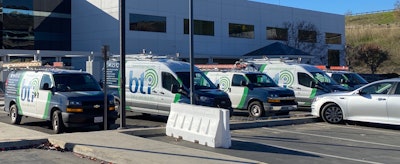 Given the limitations of traditional physical security approaches, many businesses with assets requiring protection are outsourcing to managed IT service providers, such as BTI.BTI Communications Group
Given the limitations of traditional physical security approaches, many businesses with assets requiring protection are outsourcing to managed IT service providers, such as BTI.BTI Communications Group
Utilizing such an integrated set of tools, along with enhanced system intelligence, can significantly reduce the need for traditional security guards. Instead of a full-time security operation center listening to an endless flow of logs and events, such a system can be more proactive and provide essentially 24/7 virtual security for a fraction of the cost. In fact, often this is accomplished without human intervention or the need for any payroll.
Unfortunately, managed IT service providers rarely are experts in all disciplines – but they do exist. “We are continually designing and installing these systems down to the wiring, so it's relatively easy for us to tailor them to the specific requirements of individual construction firms needing asset protection,” says Brackett.
Such intelligent systems then prompt security guards, supervisors or managers to take immediate, appropriate action in a variety of settings to keep people or property safe. For example, construction firms may need to protect their truck fleets from thieves entering their lots at night to steal vehicles, or to prevent battery theft. In such a case, cut locks and sliced cables not only cost thousands of dollars of damage to each vehicle, but also render it inoperable until repaired.
In choosing a physical security integration partner, the best will have extensive knowledge of the available products and component parts of any system and are able to tie them together in a manner that extracts significant added value. In other words, the whole properly integrated system should be much greater than the sum of its parts. The price for such expert integration is much lower today than many construction firm owners would expect for the quality of service and the effectiveness of the theft deterrence.
Where old school security may involve retaining guards around the clock or missing important threats because disparate systems are not communicating, taking advantage of physical security integration can ensure a prompt response when it's needed to prevent theft and at much lower cost.
Del Williams is a technical writer based in Torrance, CA.




